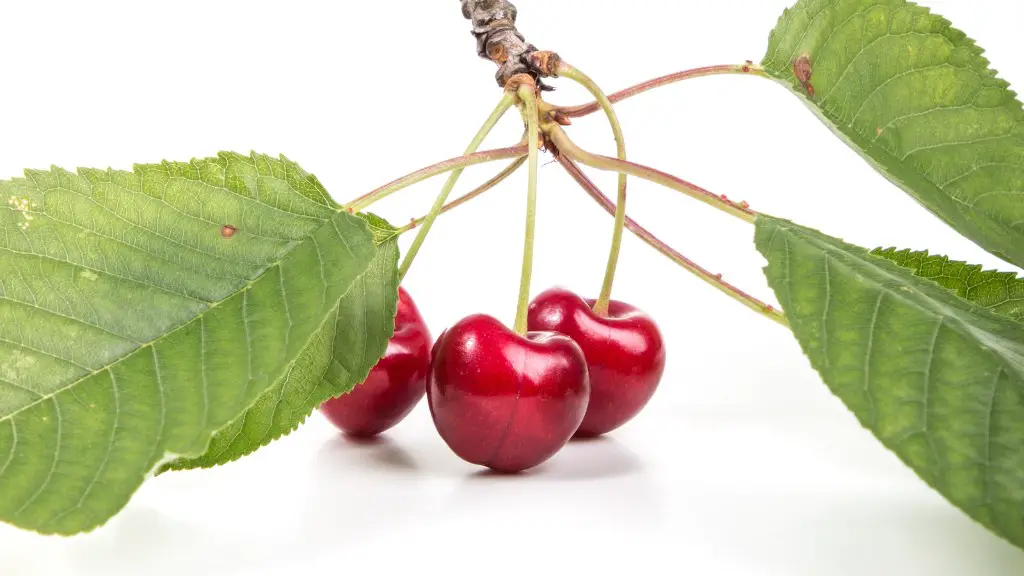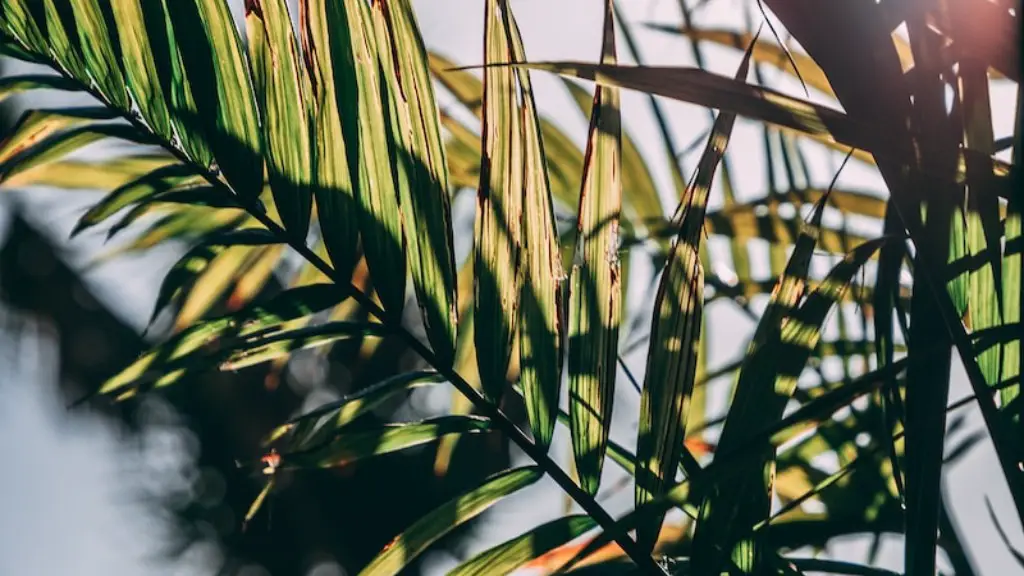Signs of Poor Health in a Flowering Cherry Tree
Flowering cherry trees are among the most beloved trees found in gardens. They provide magnificent spring blossoms, shade and delight in gardens. Unfortunately, their overall health is often impaired by certain insects, fungal infections and even human pruning. To ensure that the tree is in good condition, it is important to know when to prune and in what circumstances.
The first sign that a flowering cherry tree is in poor health is when the leaves start to droop and thin out. The foliage may appear blotchy and mottled. This can be indicative of an insect or fungal infection which may create a misconception that the tree needs to be pruned back heavily. In reality, the underlying cause of the poor health needs to be treated and not covered up.
Another common symptom seen in flowering cherry trees is when stem and branch cankers start to form. These are localized sunken areas on the wood, or dead patches on the tips of branches. Cankers can be very serious, leading to branches and stems dying and decaying. If pruning is done when a tree is diseased, the infection can spread and worsen, so it is important to act quickly if these cankers are found.
The timing of pruning can also indicate if a flowering cherry tree is in poor health. Flowering cherry trees flower in the spring, and pruning should be avoided as much as possible. If pruning is necessary, it should only be done in the late summer to early fall, after the flowers have stopped blooming. Pruning done outside of these times may reduce flowering potential.
Lastly, the amount of pruning done can also determine the health of a flowering cherry tree. Pruning too heavily or taking off large, mature branches can shock the tree, which can cause the tree to become stressed and unbalanced. When necessary, only remove dead, damaged or less desirable branches. While pruning can improve a flowering cherry tree’s health, over-pruning can just as quickly damage it.
Creating an Annual Pruning Routine
When it comes to pruning a flowering cherry tree, it is important to take an annual approach. This will ensure that the tree is healthy and remains healthy with minimal effort. A regular pruning routine can provide many benefits to a flowering cherry tree, such as better air flow to reduce the risk of diseases, better light condition for blooming, and balanced growth which can reduce the possibility of limbs from splitting due to the weight of blossoms.
When creating an annual pruning routine, it is important to plan ahead and keep a close eye on the tree’s health. The best time for pruning is early spring, when the tree is about to break dormancy. Pruning at this time helps to remove dead or diseased branches and helps to reduce the tree’s overall size, if desired. This can also create better air flow, reduce stress on the tree, and provide its roots with enough oxygen to not just survive but to thrive.
Early spring pruning should be followed up with another pruning session at the end of the summer. This is beneficial because the tree will have had the chance to fully bloom and the growth from the spring pruning will have been visible. Pruning at this time will help to keep the tree’s shape, remove damaged or less desirable growth, and reduce its size further, if desired.
Once an annual pruning routine is established, it is important to monitor the tree closely throughout the year to identify any signs of disease or insect infestations. If any are found, they should be treated as soon as possible to avoid pruning the tree while it is in poor health. Following a routine and closely monitoring the tree’s health will ensure that it remains healthy and beautiful for years to come.
Limiting Pruning to Improve Flowering
Flowering cherry trees are beloved for their showy flowers and fragrant scent, so it is important to limit pruning to maximize the tree’s blooming potential. There are several factors to consider to ensure that the tree blooms as much as possible. First, pruning should only be done in the late summer to early fall, as pruning done at any other time may reduce flowering potential.
When it comes to selecting the branches to prune, the goal should be to maintain an open structure with good air flow through the tree canopy. This allows for better light and airflow which encourages the tree to grow and flower. When selecting branches, it is best to focus on removing dead, damaged or less desirable growth, and avoid taking off large, mature branches which can shock the tree.
It is also important to be very selective when pruning flowering cherry trees. As the tree sets its flower buds in the fall, overly aggressive pruning can reduce or eliminate a tree’s flowering potential. Pruning should, therefore, be kept to a minimum to preserve the beauty and structure of the tree while still allowing it to set and maintain its flower buds.
Underlying Causes of Poor Tree Health
It is important to identify the underlying cause of a tree’s poor health before making any decisions on pruning. Many problems can be prevented by providing the tree with the right care. Fungal infections can be caused by excessive moisture, so it is important to ensure that the soil is well drained and water is provided in moderation. Similarly, insect infestations can be prevented by providing the tree with the right fertilizer, additional water when required, and pruning to keep the tree healthy.
It is also important to prune flowering cherry trees to promote good air flow and reduce the risk of disease. Pruning helps to remove dead or damaged branches, and helps to keep the tree’s size in check. Pruning also encourages new growth, which can help to strengthen the tree and improve its overall health.
Good care throughout the growing season will help to ensure that a flowering cherry tree is healthy and blooms as much as possible in the spring. Regular monitoring, attention to pruning, and soil and water maintenance will go a long way to keep the tree healthy and beautiful for years to come.
Tree Species and Pruning Requirements
The pruning requirements for flowering cherry trees will depend on the species being grown. In general, trees such as Japanese and Yoshino flowering cherries tolerate moderate pruning and can be pruned during their dormant season or just after blooming. For other species, such as Weeping or Snow Goose cherries, only minor pruning should be done after blooming in order to maintain the tree’s unique shape.
It is also important to note that some species are more susceptible to fungal and bacterial diseases than others. The Japanese and Yoshino flowering cherries are resistant to such diseases, while the Weeping and Snow Goose cherry species are more susceptible. It is therefore important to be aware of the species being grown and choose the right pruning approach to ensure that the tree remains healthy and blooms as much as possible.
When it comes to pruning flowering cherry trees, it is important to take a species-specific approach. Pruning should be done selectively and in accordance with the tree’s specific needs. A regular pruning routine and close monitoring of the tree’s health will help to ensure that it remains healthy, grows well and blooms beautifully in the spring.
Monitoring Growth and Pruning Response
Finally, it is important to monitor the tree’s growth and pruning response to ensure that it remains healthy. Pruning can have an immediate effect on the tree’s growth, as well as a long-term effect. It is important to pay attention to how the tree responds to pruning and adjust, if necessary. Too much pruning can shock the tree and reduce flowering potential, while too little pruning can lead to disease, overgrowth and even limb splitting due to the weight of blossoms.
It is also important to remember that pruning is an ongoing process, and it is important to look for any signs of pest infestations or fungal diseases and treat them as soon as possible. It is also important to provide the tree with the right soil and water conditions, as this can have a significant impact on its overall health. Properly caring for and monitoring a flowering cherry tree will help ensure that it remains healthy and blooms as much as possible in the spring.



